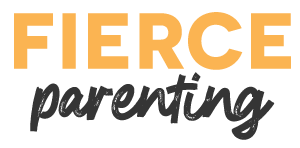If you’re new to home education, or even a seasoned veteran entering new territory, finding the right resources can be daunting. The sheer volume of available resources feels like a tidal wave of information. One internet search can leave you feeling adrift, maybe even questioning decisions you once felt confident in.
Before I begin taking stock of our curriculum and considering what may need to change in the coming year (or even part way through the year if something isn’t clicking), I ask myself a few helpful questions to keep me afloat:
- What comes first?
- Who is my child?
- Whom do I trust?
What comes first?
I try to prioritize our learning so I know what we can ditch on a hard day. Consider making a list of what’s really important for your family and what things are okay to put on the backburner when you’re in a busier or more stressful season.
Before embarking on the torrential search for resources, bring yourself back to your main goals in education. Remember the why. Think about who you want your children to be, not just what you want them to learn.
Consider the ultimate aim of education boiled down to its most simplest answer: to love God with our minds, to know him and make him known. Consider what things are necessary towards this aim, and what are merely the proverbial icing on the cake.
Who is my child?
I fight the urge to look at my children as ahead or behind, and instead take inventory of what they know, and what I want them to learn. Then I consider how they learn.
If I want my son to be confident in multiplication, but the route we’re taking isn’t clicking, instead of looking at him as behind, I can say, “He knows how to skip count— how do I bridge this gap so he can learn to multiply?”
Or if my son is particularly flourishing in art, instead of thinking, “He’s ahead of his peers, I’ll let it lie,” I can think, “How can I nurture this skill and help him learn more?”
Or I may realize: “I have four children, I want them to learn history, but I cannot handle teaching four separate years of history at once— how can I teach them together?”
Then my search for resources is less of a one-size-fits all approach— instead I can search for my child or family in our unique needs.
This also helps prevent me from heaping on extra stress because I’ve compared my children to someone else and felt pressure to add icing we don’t need nor even enjoy.
Whom do I trust?
In the Internet age, we can easily search the web for advice and resources. With the increased popularity of home education there are many seasoned families— and in my experience, homeschooling parents love to talk about homeschooling. But this isn’t always helpful.
I take advantage of the many resources at my WiFi fingertips, but I’ve also learned the value of simply asking another homeschool mom for her opinion on a curriculum, what she did for particular things, what worked, what she suggests, what she loved, what she despised. This kind of discipleship is invaluable. We get the information we seek, but we are also encouraged and connected, growing relationships with fellow parents in the trenches of home education.
Men and women in your local church and local homeschool groups are brimming with wisdom that comes only with experience. Don’t miss the opportunity to learn from them by defaulting to Google.
What comes first? Who is my child? Whom do I trust?
When I’ve asked myself these questions, I feel more equipped to jump in on my search for resources and curriculum. I begin each year looking to grow our family in various areas— in an effort to make your search easier, I’ll share a few of our favorites:
Bible
We want our children to be so familiar with Scripture that they know where to turn when they have questions. We want them to know the Word, not just Bible stories or retellings.
We begin our day with both Bible memory and a Bible study. As soon as our boys were reading independently, we bought them graphic novel style Bibles to read in the morning as soon as they wake up. We want them to develop the habit of greeting the day with God’s Word on their own. As they become more proficient readers, we’ll transition them to their own Bibles.
Do not fear the words of actual Scripture— summaries and children’s Bibles are helpful, but they should never replace the God-breathed words of Scripture itself. As J.C. Ryle wrote, “Children understand far more of the Bible than we think possible.” The following have been the most helpful resources in this effort:
- The Action Bible by Sergio Cariello
- ESV Large Print Bible
- Long Story Short By Marty Machowski
- The Gospel Story Bible By Marty Machowski
Reading
Because reading Scripture is a priority for us, we also highly prioritize our children learning to read— though our kids have been across the spectrum on learning to read, including one with dyslexia.
We begin— and even after reading skills flourish, we continue— by reading to our kids constantly. Before bed, at meals, listening to audiobooks together, while they play with toys, or fall asleep in our laps. This has allowed a deep love for stories and words to develop in them all. Our son with dyslexia presses on through the difficulties he has with reading simply because he loves stories— and they are worth the extra effort required of him.
We don’t have a tried-and-true learning-to-read system since each of our kids learned so differently, but we do really love some of the following resources:
- The Read Aloud Family by Sarah Mackenzie
- Simply Charlotte Mason Pathway Readers
- The Read Aloud Revival Book Lists
Math
From what I’ve gleaned there isn’t a single holy grail of math curriculum. We’ve used Math-U-See and enjoy it, but every child is different. This is one of those “pick the brain of local homeschool moms and maybe even peek at their books” subjects.
Science
Because we lean toward the Charlotte Mason philosophy, and our children are still quite young, our science is limited to the experiential and natural world. We study nature and begin learning science this way. One of the most helpful resources for this is the curriculum Exploring Nature with Children.
Humanities
- Simply Charlotte Mason
- How to Teach Your Children Shakespeare by Ken Ludwig
- The Story of the World History Series
I’ve learned to never be so attached to a curriculum that I refuse to discard it when it’s clear it isn’t working for our family— or for an individual child. Curriculum and resources are tools, but we must never let them eclipse the unique needs of our children. Thankfully, each subsequent year of home education it becomes easier to identify those unique needs, to recognize what works and what doesn’t, and to ease into learning that flourishes. And when it doesn’t, we become more comfortable with changing course as necessary.
share this
FREE RESOURCE

Get the Family Vision eBook
Build unity and gain Gospel-centered clarity for life's big and small decisions. Download our 54 page eBook, Crafting Your Own Family Vision Statement by filling out the form below.
We’ll never sell your info. Unsubscribe any time.
about the author
Lydia Schaible
Lydia is mother to four young children through whom she's found great joy in unexpected places. She loves to encourage others toward this joy in raising their children intentionally and wholeheartedly committed to Christ. Between read-alouds and toddler-paced hikes, she writes in an effort to draw others to beauty, truth, and goodness that ultimately points us to our Creator and Savior. Her roots are in the PNW but following her husband's career in medicine she's been transplanted to the American South. Together they aim to love God and neighbor through the local church and a hospitable home.
related posts
Avoid The Summer Slip
Summer learning loss is real—but it doesn’t have to be inevitable. This kid-approved Bingo card from Gospel Tech helps families…
Nourishing Our Families with God’s Word
Whether we’re snacking on a verse or feasting on a passage, it comes down to this - we need the nourishment of God’s Word.
3 Movie Heroes Who Can Get Your Kids More Interested in God
Hollywood Heros: How Your Favorite Movies Reveal God By: Frank and Zach Turek





